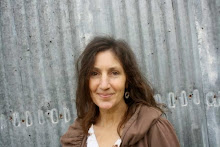
This rainy Sunday I baked the no-knead, long rise bread I started yesterday.
The recipe: http://www.nytimes.com/2006/11/08/dining/081mrex.html, I followed pretty closely. All whole wheat flour. Baked in a hot oven in a preheated cast iron skillet with a makeshift lid for the first half hour. Crusty, chewy. Here photographed on JB Blunk's wood board made from drift wood and Rufus Blunk's Bishop Pine shelf (in progress), just drying in the house now before patching a few knot holes and voids. And below that in one of these photos the Bishop Pine floor boards Rufus harvested and milled, now worn after twelve years of life and sun. Crusty, knotty, earthy, slowed life. It's good.























